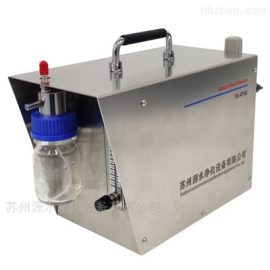Pan-Tilt Motor Control System
# Pan-Tilt Motor Control System
## Introduction to Pan-Tilt Motors
Pan-tilt motors are essential components in various applications that require precise movement control in two axes. These systems typically consist of two servo or stepper motors that enable horizontal (pan) and vertical (tilt) movement, creating a versatile platform for cameras, sensors, or other devices that need directional adjustment.
The pan-tilt mechanism has become increasingly popular in robotics, surveillance systems, and automated photography setups due to its ability to provide smooth and controlled movement across multiple axes.
## Key Components of a Pan-Tilt System
A typical pan-tilt motor control system consists of several important components:
– Two motors (usually servo or stepper motors)
– Motor controller or driver board
– Power supply unit
– Microcontroller or control interface
– Mechanical mounting structure
– Feedback sensors (optional for closed-loop systems)
The choice between servo and stepper motors depends on the specific requirements of the application, including precision, torque, and speed needs.
## Applications of Pan-Tilt Motor Systems
Pan-tilt motor control systems find applications in numerous fields:
### Surveillance and Security
Security cameras utilize pan-tilt mechanisms to cover wide areas with minimal hardware. Modern systems can be programmed to follow specific patterns or respond to motion detection.
### Robotics and Automation
Robotic arms and automated systems often incorporate pan-tilt functionality for precise positioning. This is particularly valuable in manufacturing and assembly lines.
### Photography and Videography
Professional camera rigs use pan-tilt systems for smooth tracking shots and stabilized footage. These systems can be programmed for repeatable movements in time-lapse photography.
### Scientific Instruments
Telescopes, microscopes, and other scientific equipment benefit from precise pan-tilt control for accurate positioning and tracking of objects.
## Control Methods for Pan-Tilt Motors
There are several approaches to controlling pan-tilt motor systems:
### Manual Control
Basic systems may use joysticks or manual input devices to control the motors directly. This is common in simple surveillance setups.
### Programmable Control
More advanced systems use microcontrollers with pre-programmed movement patterns or sequences. These can include:
– Position-based movement to specific coordinates
– Time-based movement sequences
– Sensor-triggered movements (responding to light, motion, etc.)
Keyword: pan tilt motor
### Computer Vision Integration
Sophisticated systems combine pan-tilt control with computer vision algorithms to enable:
– Object tracking
– Face recognition and following
– Automated scanning of areas
## Challenges in Pan-Tilt Motor Control
While pan-tilt systems offer great flexibility, they also present some technical challenges:
### Mechanical Limitations
The physical design must balance range of motion with stability and precision. Excessive weight or improper balancing can strain motors and reduce accuracy.
### Power Consumption
Continuous movement can drain power sources quickly, especially in battery-operated systems. Efficient control algorithms help mitigate this issue.
### Precision and Repeatability
Achieving consistent, precise movements requires careful calibration and potentially closed-loop feedback systems to compensate for mechanical imperfections.
## Future Developments
The field of pan-tilt motor control continues to evolve with several promising directions:
– Integration with AI for more intelligent tracking and decision-making
– Lighter and more efficient motor designs
– Improved wireless control capabilities
– Enhanced feedback systems for greater precision
– Miniaturization for portable and wearable applications
As technology advances, pan-tilt motor control systems will likely become more accessible, precise, and integrated into our daily technological landscape.


